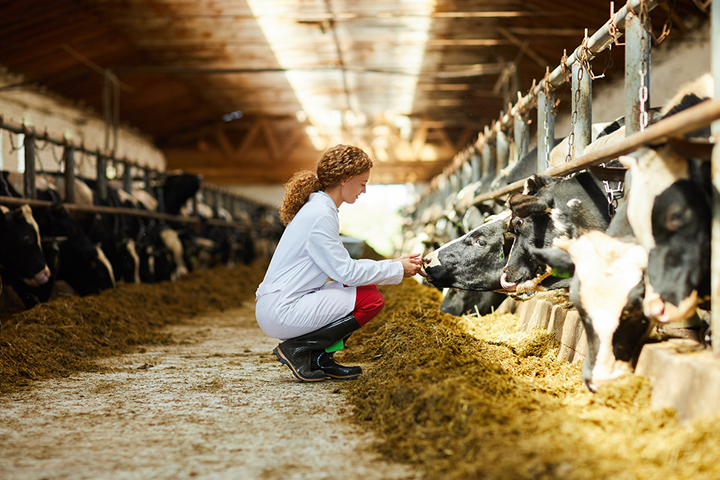Evolution Brought Milk to Our Tables

Believe it or not, for most of the 150,000 years humans have been walking on earth, adult humans couldn’t drink milk. Before 10,000 years ago, if any adult human, anywhere on the planet, ever drank milk, they would have an extreme physical reaction with pain and cramps. Then something happened.
A genetic mutation appeared that enabled the body to continue producing lactase into adulthood. This seems to have been a distinct evolutionary advantage, even though scientists are unclear on exactly why. It was most likely linked to the animal domestication, humans starting to eat fermented dairy food or maybe simply the fact that raw milk is nutritious and calorie dense. Regardless, since then milk and dairy products have been a central piece of human diet. Providing milk protein, with a large proportion of essential amino acids, that is indispensable for the structure of body cells (such as muscles, organs, skin, hormones, enzymes).
Milk and Milk Products
Today the food industry processes milk in numerous ways and in many different products. Apart from yoghurt and milk it is also used in cheese and bakery products as well as in ice cream production. Milk protein is still one of the most important ingredients that is tracked in all these products. The protein content also plays an important role both for the payment of milk delivered and for determining the breeding value of cows.
The Kjeldahl Method Explained
Total Protein in milk is determined with the Kjeldahl method, using Kjeldahl digestion and distillation. The method determines all the nitrogen content in the sample, which is then multiplied with a specific factor to obtain the protein content. The Kjeldahl method is an efficient and rapid method to determine the total protein in milk.
However, since it is based on all the nitrogen in milk it will not always give a precise value and it fails to identify adulteration by other nitrogen compounds. Sometimes specific instruments are therefore used to detect adulterations, such as Melamine, and sometimes a combination of Spectroscopy and Kjeldahl instruments are used. Using the same Kjeldahl equipment to determine the Non-protein-nitrogen compounds (NPN) is also a good solution. Determining both the Total Protein and the NPN gives a better analysis of the sample, but requires more time and work in the laboratory.
Casein vs. Whey Protein
Kjeldahl instruments can also be used to analyze the Milk and distinguish between Casein and Whey protein, both present in milk. One of the significant differences between casein and whey protein is how quickly your body absorbs them. Casein protein provides your body with a slow, steady release of amino acids, making it ideal before fasting situations, such as sleep. On the other hand, your body digests and absorbs whey protein much quicker, which makes it the perfect bookend to your workouts, as it will kickstart the muscle repair and rebuilding process. Casein is determined with Kjeldahl instruments and is an established method specified by AOAC, IDF and ISO.
Determination of Protein
Each laboratory applies different criteria for their method to determine milk protein. Some laboratories are using classic methods that are officially established, whereas others are preferred by considering fast processing times, saving chemicals and environmental protection. Regardless of method choice, OPSIS LiquidLINE can provide an efficient solution for determining Total protein, Pure Protein, Non-protein-nitrogen compounds and Casein in milk. Our dedicated Milk and Dairy solution is customized for the unique requirements in this industry and includes, among others;
- Unique results with our unique Predictive Titration technology - giving a relative standard deviation of less than 0.75% on the titration analysis
- Included LabConnect software to facilitate entering of Weights and retrieval of results from a computer. Can be configured for Milk analysis with a set volume.
- Well established and proven deployment in many of the worlds largest Dairies. All major dairies in China have now replaced their previous protein solution with OPSIS LiquidLINE.
Please contact us to request our brochure “Solutions for Dairy” or any other questions.
Author: Olle Lundström, OPSIS LiquidLINE
Learn more about the history of measuring protein >>
Learn more about our solutions for Wet Chemistry Laboratories working with dairy producers >>